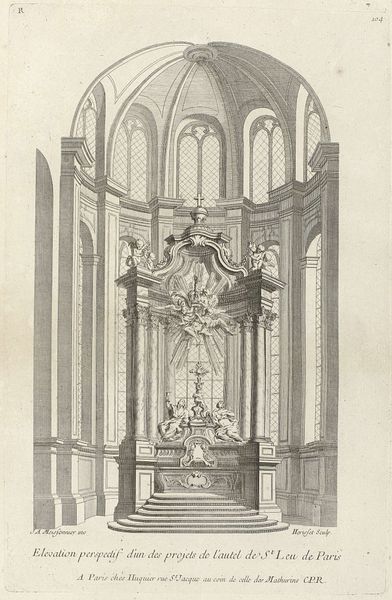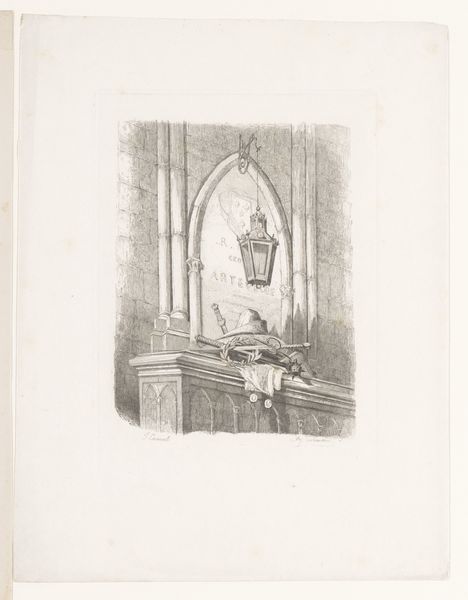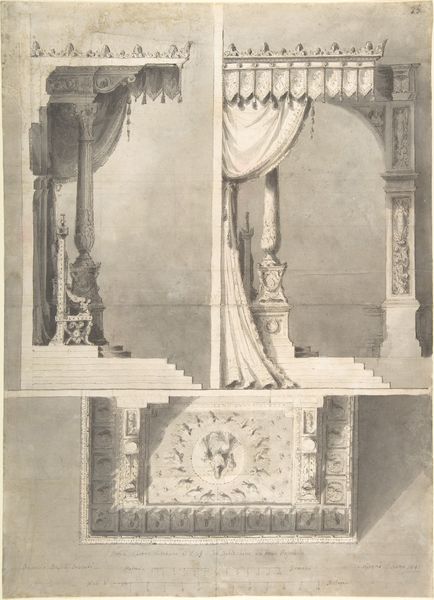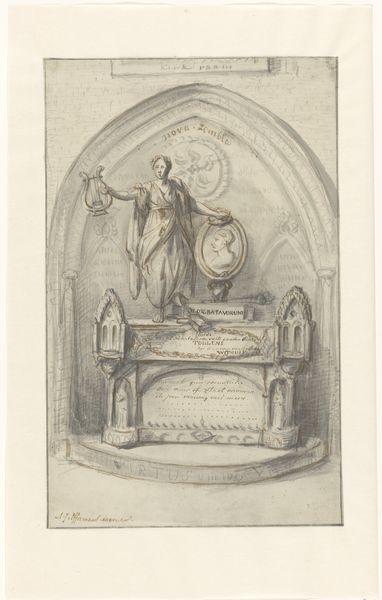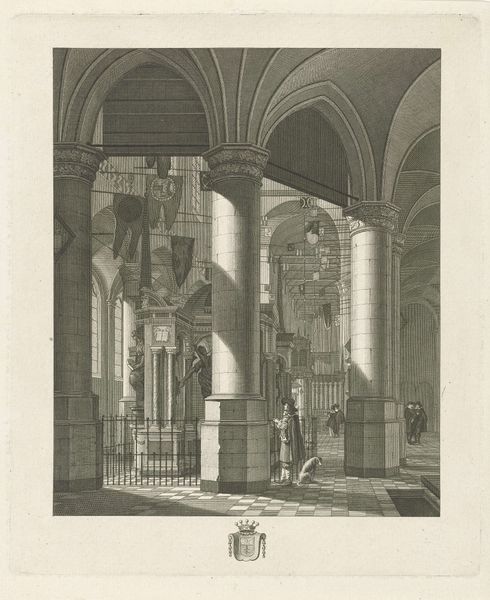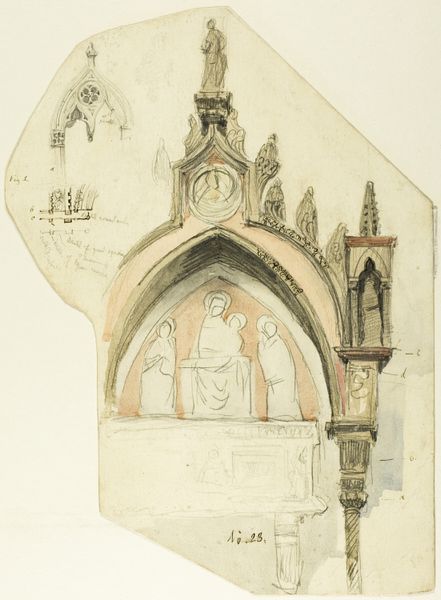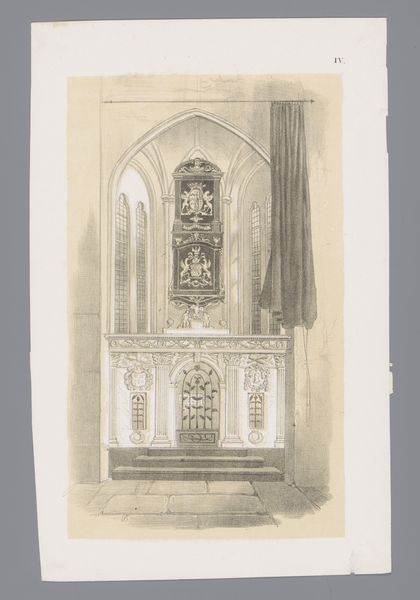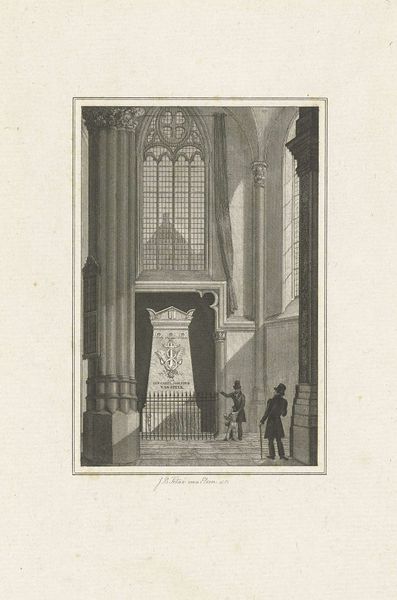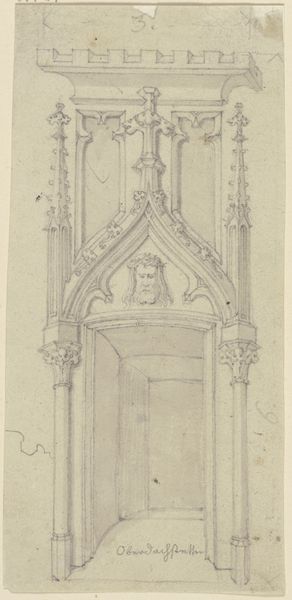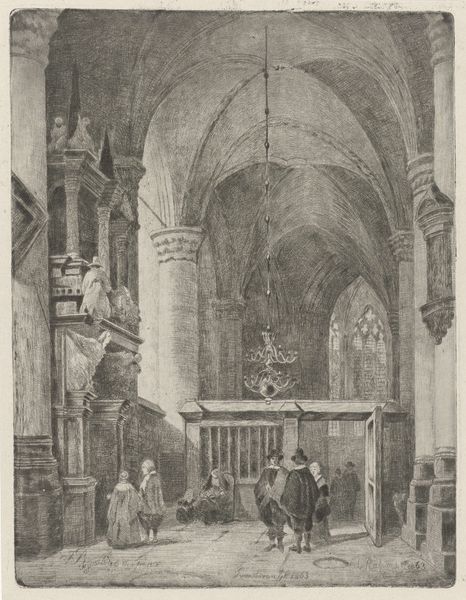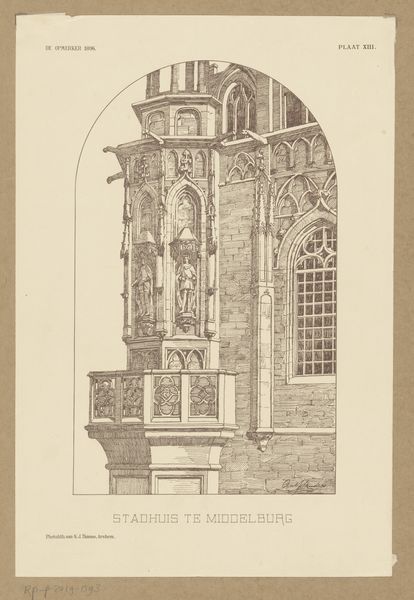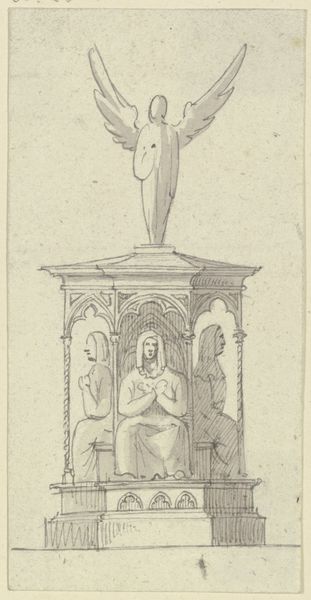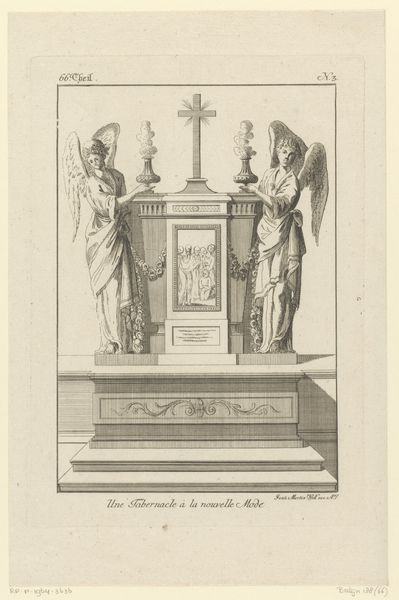
Grabmal in einer Kirche, ein Ritter auf einem Sarkophag kniend
0:00
0:00
drawing, paper, watercolor, pencil, architecture
#
portrait
#
drawing
#
charcoal drawing
#
figuration
#
paper
#
watercolor
#
romanticism
#
pencil
#
history-painting
#
watercolor
#
architecture
Copyright: Public Domain
Curator: Let’s take a moment to appreciate this drawing, “Grabmal in einer Kirche, ein Ritter auf einem Sarkophag kniend” by Friedrich von Gärtner. It is currently held at the Städel Museum. Editor: It's evocative, certainly, though tinged with a palpable melancholy. The watercolor medium softens what could have been a stark portrayal of death, lending the scene an ethereal quality. Curator: Indeed. Von Gärtner’s architectural renderings often blend a romantic sensibility with a sharp eye for historical detail. Notice the setting, it evokes a sense of sacred space that informs how viewers should approach the drawing’s central figure: a knight forever kneeling. Editor: The tomb is the central object, not just as a representation but also as a constructed artifact. Consider the elaborate carvings at its base. Griffin-like figures appear to support an unyielding structure. What materials did the artist envision here, I wonder? Was it cold, austere marble or a more ornamented construction, meant to express a similar vision of social power? Curator: Those winged figures contribute to an atmosphere that glorifies the past through a kind of wistful imagination. It underscores Romanticism's tendency to revisit the medieval period and reimagine its ideals. It also plays to nineteenth century patrons’ taste for seeing themselves cast as such heroes. Editor: Absolutely. And observe the knight—kneeling in perpetual devotion. There's a kind of artistic labor operating here on several levels, from the sculptor who shaped the tomb to the artist who then recreates it in watercolor and pencil on paper. The labor involved speaks to enduring socio-economic inequalities and power dynamics that linger even within images of death. Curator: Yes, even his piety becomes a feature for the viewer’s aesthetic consumption. But perhaps the drawing also functions as a kind of social commentary. We are prompted to question the nature of such monuments, especially when juxtaposed against more egalitarian social aspirations. Editor: Well said. By giving form to this tomb through precise technique, Von Gärtner urges us to recognize that such craftsmanship serves powerful ideologies. Curator: Ultimately, it is a window into both personal piety and how those sentiments become enmeshed within structures of power. Editor: Indeed, where aesthetics and power become forever entwined.
Comments
No comments
Be the first to comment and join the conversation on the ultimate creative platform.
